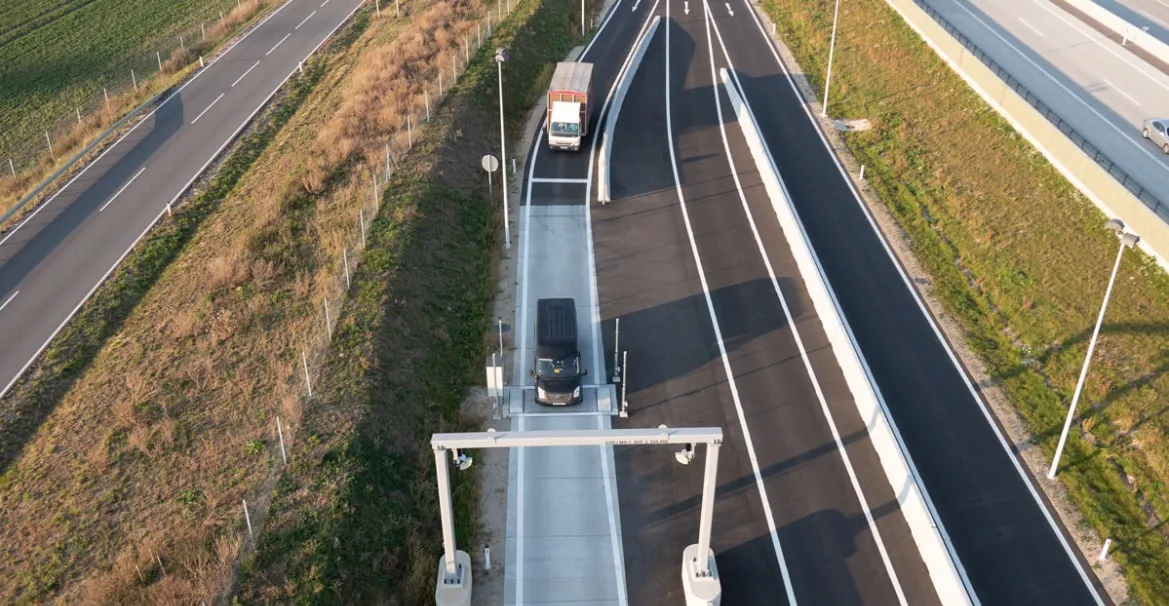
Dynaweigh has developed automatic road truck scales HHB01 and HHB02 for the dynamic detection of overloaded vehicles with a legal verifiable accuracy of +/- 1% (class 2D), meeting the requirements of the OIML R134 regulations.
Total weight and axle loads are recorded automatically during the crossing at speeds up to 35 km/h.
Several years ago, the scales were installed at the traffic control station on the Austrian A5 northern highway and are used for monitoring traffic safety and to detect overloaded vehicles by the Austrian enforcement executive.
New components with a high-speed WiM system – for normal traffic speeds (including classification) – have been recently added.
Like a radar system the collected data (total mass, axle load, vehicle type and licence plate number) can be forwarded with a photo of the vehicle automatically in real time by means of the Weight Flasher into data processing systems or to the control authority.
Advantages include high accuracy, increase of test frequency, it is fully automatic 24 hours a day and can be used during all seasons. It also allows photo documentation of the vehicle and transfer of the approved weighing results into data processing systems.
Content produced in association with Dynaweigh










